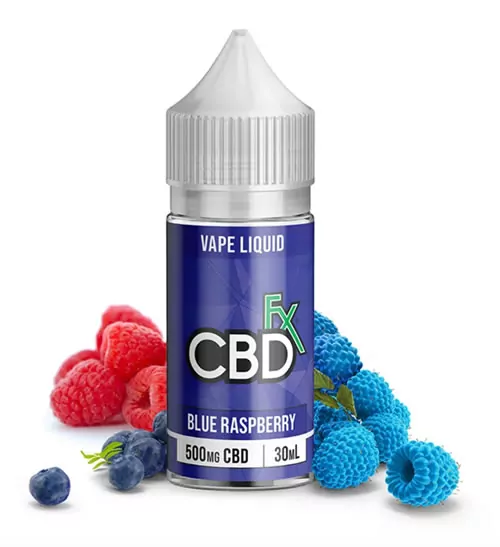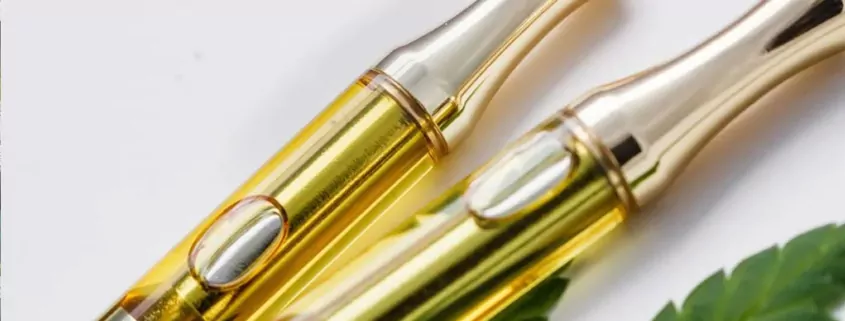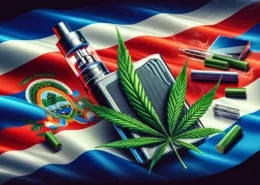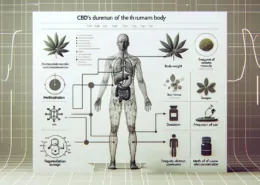Is Vaping CBD Safe? Risks, Side Effects & Alternatives
Cannabidiol, or CBD, has become a ubiquitous ingredient in the wellness world. It’s infused into lotions, cosmetics, hair products, and a vast array of edibles, from gummies and baked goods to sparkling beverages. Another popular method of consumption is inhalation through vaping. But how does vaping CBD work, what are its effects, and most importantly, is it a safe way to use this popular cannabinoid? The answer is more complex than a simple yes or no, involving considerations of bioavailability, product purity, and the inherent risks of inhalation. This guide, with insights from medical experts, will delve into the specifics of CBD vaping, its potential risks and side effects, its legal status, and safer alternatives to consider.
First, What Exactly is CBD?
Before we can understand vaping CBD, it’s essential to understand CBD itself. CBD is one of the most abundant active cannabinoids found in the _Cannabis sativa_ plant. Unlike its more famous counterpart, delta-9 tetrahydrocannabinol (THC), CBD is non-psychoactive, meaning it does not produce the intoxicating “high” associated with marijuana. According to a 2018 report from the World Health Organization (WHO), CBD is not considered to have abuse or dependence potential and is generally well-tolerated with a good safety profile. A 2024 study in Neuropsychopharmacology also concluded that CBD, when used alone, is unlikely to cause functional impairment.
The legal distinction between hemp and marijuana is crucial here. Under the 2018 U.S. Farm Bill, hemp is legally defined as parts of the Cannabis sativa plant containing 0.3% or less THC on a dry weight basis. Marijuana, on the other hand, refers to parts of the plant with a THC concentration higher than 0.3%. Most legal CBD products in the U.S. are derived from hemp.
CBD oil is a concentrated extract of cannabidiol, typically mixed with a carrier oil like medium-chain triglyceride (MCT) oil, coconut oil, or hemp seed oil to improve absorption and dosing. While research is still evolving, studies have suggested that CBD may have potential therapeutic benefits for a range of conditions, including pain management, anxiety disorders, and certain seizure disorders.

CBDfx CBD Vape Juice
- Broad spectrum CBD
- Available in 500mg, 1000mg & 2000mg
- Made with organic hemp & non-GMO
- Coconut-derived MCT oil
- Expertly-crafted flavor for maximum enjoyment
What is CBD Vaping and Why Do People Do It?
CBD vaping involves using a small electronic device, such as an e-cigarette, vape pen, or e-hookah, to heat a specially formulated CBD e-liquid (often called vape juice or vape oil) until it aerosolizes. The user then inhales the resulting vapor. The primary reason people choose to vape CBD is its high bioavailability and rapid onset of effects.
Bioavailability refers to the proportion of a substance that enters the circulation when introduced into the body and so is able to have an active effect. As Dr. Ryan Sultan, an assistant professor of clinical psychiatry at Columbia University, explains, bioavailability is higher when CBD is inhaled because it bypasses the digestive system and first-pass metabolism in the liver. When you ingest CBD (e.g., in an edible or capsule), a significant portion is broken down by the liver before it reaches the bloodstream. Inhalation, however, allows the CBD to be absorbed directly into the bloodstream through the lungs, leading to a faster and more potent effect. This can be particularly appealing for individuals seeking quick relief from symptoms like acute anxiety or pain.
Is Vaping CBD Safe? The Critical Risks and Concerns
While the rapid effects of vaping CBD are a clear advantage for some, the question of safety is paramount and fraught with significant concerns. The primary issue is the lack of regulation and potential for contamination.
“CBD vapes are not regulated by the Food and Drug Administration (FDA),” says Dr. Sultan. This means there is no federal oversight ensuring the purity, potency, or safety of the ingredients in CBD vape products. “There’s no way of knowing whether the CBD oil in a vaping device is pure CBD—or if other compounds, such as THC, are present.”
This lack of regulation is not just a theoretical problem. A 2022 study published in JAMA Network Open examined 89 commercially available CBD products and found that many were inaccurately labeled. The findings were concerning:
- Only 24% of products were accurately labeled for CBD potency.
- The majority of products (58%) were underlabeled, meaning they contained over 10% more CBD than advertised.
- Many products also contained THC, even those that were labeled as “THC-free.”
This means consumers could be unknowingly consuming higher doses of CBD than intended or psychoactive amounts of THC, which could lead to unexpected effects or issues with drug testing.
The Dangers of Inhaling Unknown Substances
A major concern associated with CBD vaping is the risk of lung damage, especially if the CBD vape oil is contaminated or contains unsafe cutting agents. The most notorious example is vitamin E acetate, a thickening agent that was strongly linked to the 2019 outbreak of E-cigarette or Vaping Product Use-Associated Lung Injury (EVALI), a severe and sometimes fatal respiratory illness, as reported by the CDC. While primarily associated with illicit THC vape cartridges, the risk highlights the dangers of inhaling substances not intended for that purpose.
Even without such contaminants, the act of inhaling the base liquids of vape juice (propylene glycol and vegetable glycerin) and various flavoring chemicals can cause respiratory irritation. The long-term effects of inhaling these substances are still not fully understood.
General Side Effects of CBD
Beyond the specific risks of vaping, the CDC notes that CBD itself can have potential side effects, including:
- Liver damage (particularly at high doses).
- Interference with other medications (it’s crucial to talk to a doctor if you take other drugs).
- Drowsiness or fatigue.
- Diarrhea and changes in appetite.
- Changes in mood, such as increased irritability.
CBD use is not recommended during pregnancy or while breastfeeding, as the potential health impacts on the parent and child are unknown. Negative effects have been associated with CBD use in these contexts.

CBDfx CBD Vape Juice
- Broad spectrum CBD
- Available in 500mg, 1000mg & 2000mg
- Made with organic hemp & non-GMO
- Coconut-derived MCT oil
- Expertly-crafted flavor for maximum enjoyment
The Legal Status of CBD Vaping
The legality of CBD vaping in the U.S. is complex and depends on both federal and state law. Federally, CBD vaping is generally considered legal if the product is derived from hemp and contains no more than 0.3% THC, as stipulated by the 2018 Farm Bill. However, as Dr. Sultan notes, “because CBD vapes are not evaluated by the FDA, there’s no way to confirm that they contain less than 0.3% THC as required by law.”
Furthermore, state laws can be much stricter. Some states, such as Idaho, Iowa, and Minnesota, have more restrictive regulations or outright bans on certain types of CBD products or CBD vaping specifically. It is essential for consumers to research and understand the laws in their particular state before purchasing or using CBD vape products.
Safer Alternatives to Vaping CBD
Given the significant risks associated with the unregulated nature of CBD vape products and the act of inhalation, experts often recommend safer methods of consumption. Dr. Sultan suggests that anyone interested in trying CBD should first identify their primary reason for doing so and consider other forms before turning to vaping.
Safer and more reliable alternatives include:
- Sublingual Tinctures or Oils: When CBD oil is taken sublingually (held under the tongue for 60-90 seconds), it is absorbed directly into the bloodstream through the mucous membranes. This method also bypasses the digestive system and liver, resulting in a relatively high bioavailability and a faster onset of effects compared to edibles, without the risks of inhalation.
- Edibles or Capsules: CBD edibles (like gummies) or capsules are a discreet and easy way to consume a precise dose of CBD. While their bioavailability is lower and the onset of effects is slower (as they must pass through the digestive system), they completely avoid any respiratory risks.
- Topicals: CBD-infused creams, lotions, and salves can be applied directly to the skin. This method is often used for localized relief of pain or inflammation, as the CBD interacts with local cannabinoid receptors in the skin without entering the bloodstream in significant amounts.
When choosing any CBD product, it is crucial to select items from reputable brands that provide third-party lab test results (Certificates of Analysis – CoAs). These reports verify the product’s CBD and THC content and confirm that it is free from harmful contaminants like pesticides, heavy metals, and residual solvents.
Conclusion:
Vaping CBD offers the allure of rapid effects and high bioavailability, but it comes with substantial and often hidden risks. The lack of FDA regulation means that product purity, potency, and safety are not guaranteed, and the potential for lung damage from inhaling unknown or unsafe ingredients is a serious concern. While CBD itself is not considered addictive and has potential therapeutic benefits, the method of consumption matters greatly.
For those seeking to explore the benefits of CBD, safer and more reliable alternatives like sublingual tinctures, edibles, and topicals are widely available and recommended by health experts. If you are considering using CBD for any reason, especially for a medical condition, it is always best to consult with a healthcare professional who can provide guidance on appropriate products, dosing, and potential interactions with other medications. Ultimately, prioritizing safety and making informed choices based on credible research and expert advice is the best approach to incorporating CBD into your wellness routine.
- Is It Illegal to Vape or Smoke While Driving in the UK? - August 11, 2025
- Virginia Roanoke Considers $20,000 Annual Fee for Vape Shops - August 11, 2025
- Mississippi to Ban Unauthorized Vape Products in October - August 11, 2025









